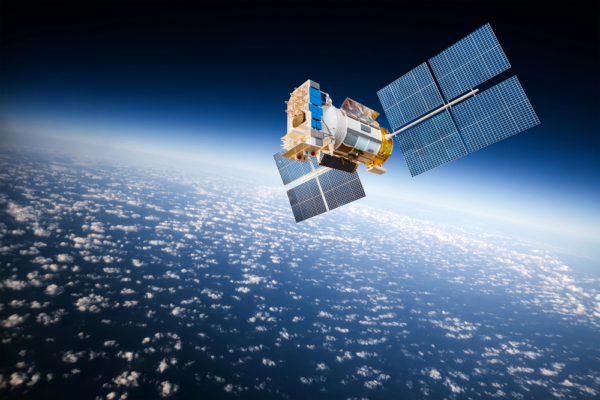
Satellites are ubiquitous today, so much so that some satellite constellations can even be seen with the naked eye. We use them for everything from intelligence gathering to weather mapping to navigation. Nevertheless, it might come as a surprise to learn that in aerospace communication systems, satellite technology is actually underused. While many aircraft do have satellite communication capabilities, they often rely on other radio systems to communicate with ground control. However, a new trend is beginning to emerge.
Satellite Technology: Transforming Aerospace Communication Systems
A Long-Overdue Upgrade for Aircraft
Although one might assume that all aircraft use satellite communications routinely, many aircraft currently in service were designed to prefer other technologies. Most commercial aircraft feature upwards of a dozen antennas for communications, but many of these are dedicated to radio channels for air-to-ground communications or for air-to-air communications with other aircraft. Satellite communications have primarily utilized GPS satellites, but these do not allow planes to relay information to the ground.
Furthermore, satellites can now go beyond simply providing a GPS signal. Civilian aircraft benefit from increased satellite connectivity as they can enable more features for passengers, like Wi-Fi access and media streaming. However, these features require more bandwidth than what traditional antenna packages could offer. With new communications systems, aircraft can expand their connectivity features and improve operations as well. It’s not just civilian aviation that seeks to expand satellite communications in aerospace, though.
Satcom Is Vital for UAVs
Satellite technology is especially important for military applications. For example, the US Air Force relies on satellites for guidance and positioning, but also for remote control of unmanned aerial vehicles, or UAVs. A 2016 report commissioned by the USAF noted that military aircraft would benefit greatly from increased satellite bandwidth. For instance, full-motion video (FMV) that could be streamed in real time would improve operation quality, but only 21% of operations were able to use this feature.
Militaries worldwide have found UAVs to be highly effective for both battlefields and budgets. With UAV market growth at nearly an astonishing 10% year over year, there are ample opportunities for aerospace manufacturers to create better satellite communications systems to satisfy current and future demand. Overall, both civilian and military sectors see the need for increased satellite connectivity with their aircraft. At the same time, these upgrades provide a useful opportunity for aerospace manufacturers to improve designs in other ways.
Responding to Modern Satellite Deployment
Satellites are placed into specific orbits. Their distance from earth has a direct impact on latency, or how long it takes for communications to make a round trip. Furthermore, satellites use different communication frequencies depending on their orbital distance and application so as to avoid interference. As new satellites are deployed, aircraft need to be able to communicate across a wider range of frequencies with satellites in more varied orbits.
GPS satellites, for example, sit in medium earth orbit (MEO). Meanwhile, Starlink’s internet satellites are in low earth orbit (LEO). Most aircraft today have SATCOM antennas for MEO, but not LEO. Transmission frequency is also considerably different between the two satellite classes. While GPS satellites commonly use a 1.5Ghz band, Starlink satellites have been authorized for use in a 12Ghz band. As a result, new antenna systems must become more versatile to accommodate different use cases simultaneously.
Reducing Weight While Improving Comms
One of the biggest concerns for aerospace manufacturers is weight. Every kilogram that can be reduced from the total weight of the aircraft leads to fuel savings. Increased communications capacity implies additional wiring and more weight from antennas. However, more modern designs can actually reduce weight by making some components redundant.
For example, switching to mini-ETH cables, which can transmit communications data over a single pair of wires using multiple signal frequencies, can potentially reduce electronics weight by up to 50%. This could potentially save thousands of dollars per year in fuel per aircraft. Power-over-Ethernet is another useful tool that minimizes cable runs. Antennas can also be crafted from more lightweight components, like carbon-fiber composites, to reduce weight further.
Environmental Benefits of New Connections
Another major motivation for improved satellite connectivity is the potential environmental impact. As it stands, many aircraft relay information only to air traffic control on the ground. A plane communicates with the ATC that has jurisdiction over the airspace in which they happen to be flying at that particular moment. This leads to disconnects between ATCs as planes traverse borders. In addition, this can create lag in information which leads to planes being stuck in holding patterns.
A plane going from Amsterdam to London, for example, may not know about a delay at Heathrow until it enters British airspace. Getting that information earlier could mean that the plane could adjust its airspeed to accommodate the shift in air traffic. The European Space Agency has promoted Iris, a satellite communications system for European airlines, to optimize flight paths and minimize the impact of delays. Aircraft will need to upgrade their aerospace communication systems in response.
Recommendations for Aerospace Manufacturers
If you’re in the aerospace industry, what can you do to make the most of this shift in communications technology? For one, switch to model-based engineering methods. Major aerospace manufacturers are using unified 3D models to plan parts designs with suppliers, and antenna systems are no exception. Secondly, start investing in more modern production methods, including 3D printing and nanomaterial fabrication. Finally, add more testing capabilities to your operations. New hardware requires new test methods.
To modernize your aerospace manufacturing capabilities, contact SAAB RDS to schedule an appointment with one of our aerospace industry experts.
